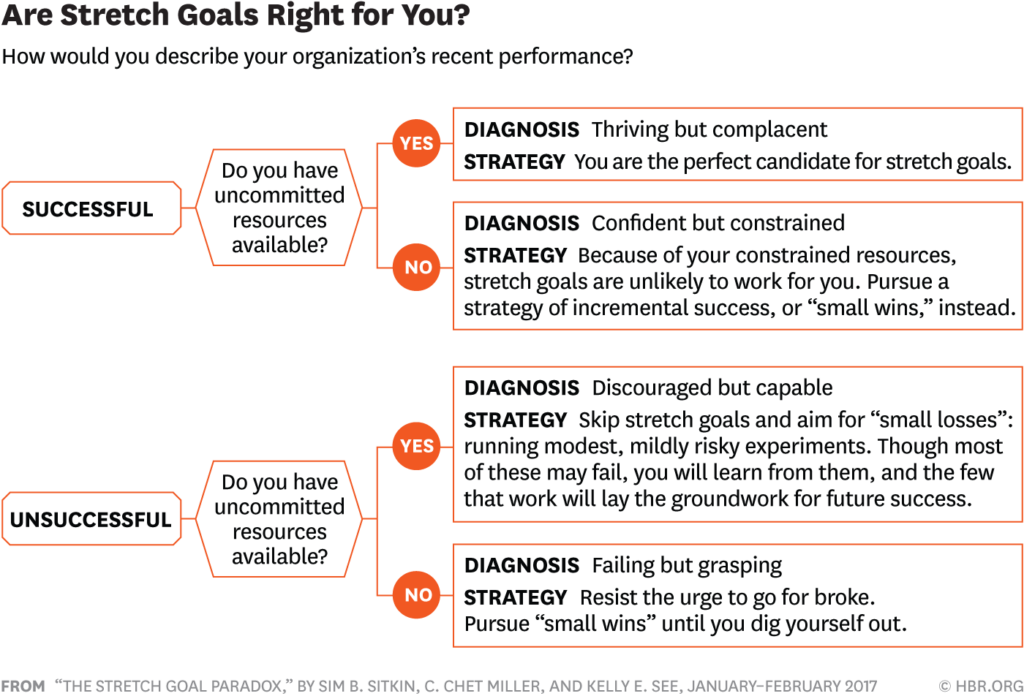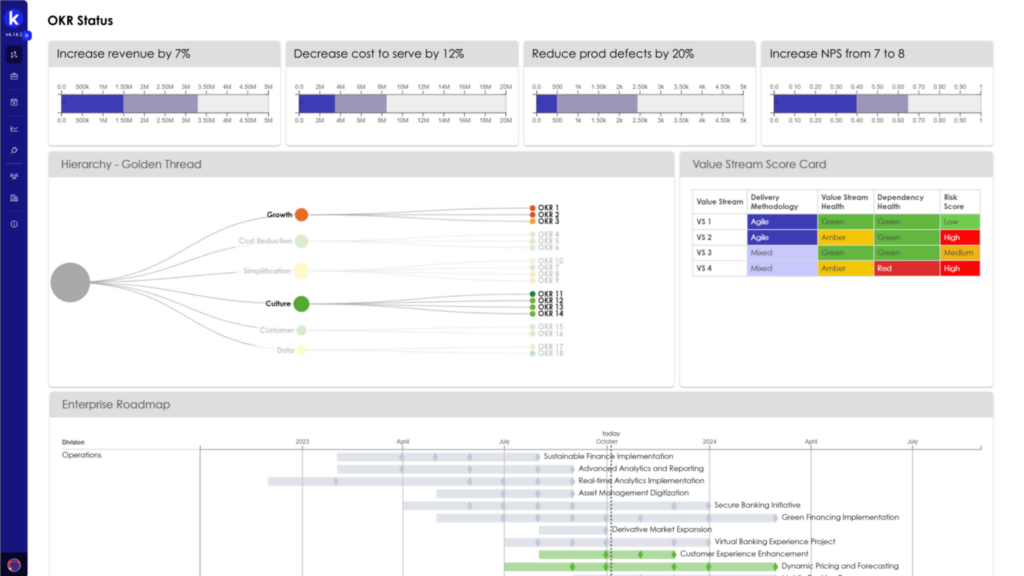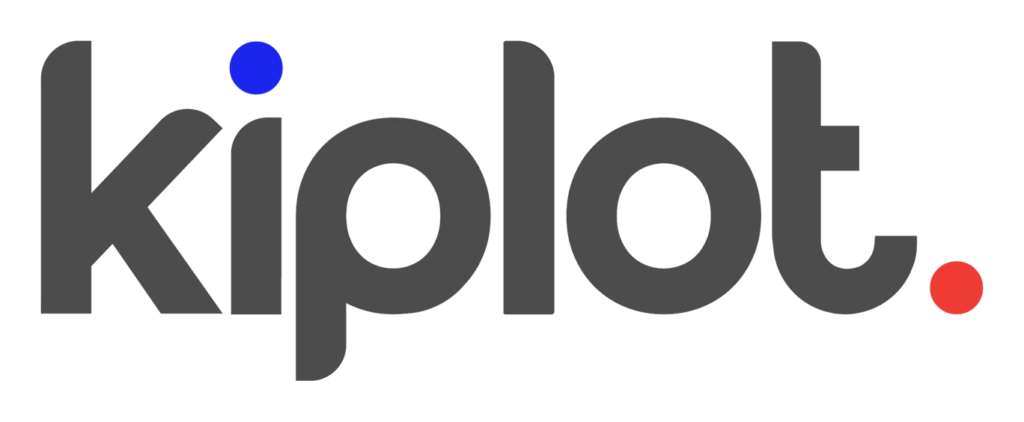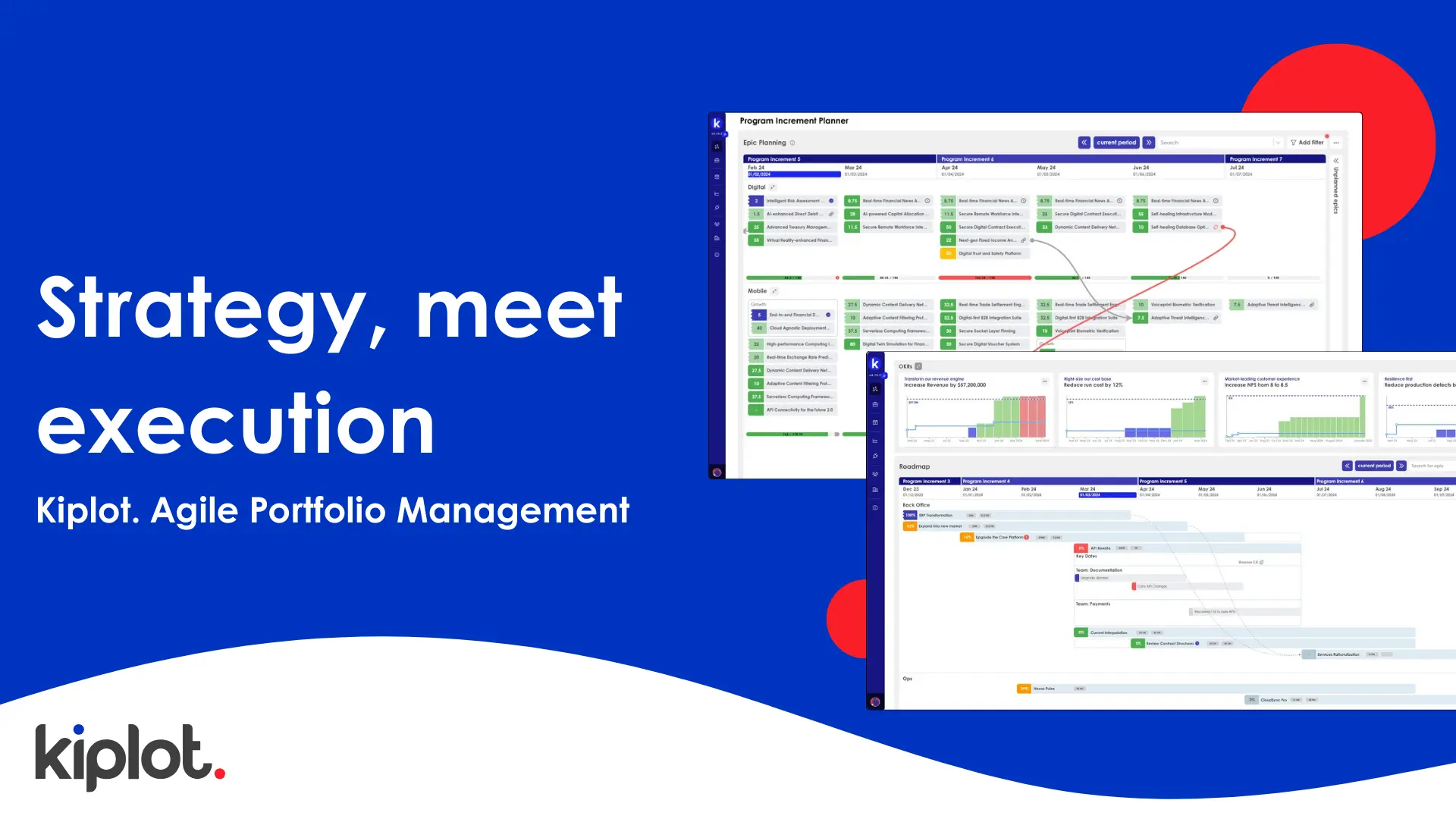Introduction
Navigating your organization without clear goals is like sailing a ship without a compass or stars — challenging and uncertain. Objectives and Key Results (OKRs) serve as your navigational tools, steering your company towards its strategic objectives efficiently.
What are OKRs? OKRs (Objectives and Key Results) are a goal-setting framework used by organizations to define measurable goals and track their outcomes. The objective sets a clear direction and the key results are measurable steps to achieve that objective. This method helps align and challenge an organization to achieve growth through specific goals.
Yet, despite their significant role, OKRs are often misunderstood, misused, or poorly implemented, resulting in a metaphorical shipwreck of strategic intentions.
Let's explore common pitfalls to sidestep when deploying OKRs, to optimize strategic execution.

#1: Overcomplicating OKRs
OKRs should be straightforward and easy to understand. A common mistake is the use of nested OKRs — OKRs within OKRs — which adds layers of complexity. Nested OKRs might seem to offer a higher resolution of your progress but more often, they lead to confusion and inefficiency.
To avoid this, maintain a clear distinction between Portfolio OKRs, which track the organization's high-level goals, and Local OKRs, which focus on team-specific objectives.
Moreover, it is important to understand and appropriately use tracking mechanisms for your OKRs. Here's a suggested order of adoption, along with their definitions:
- Target: Where you want to get to, this is the ultimate goal your OKR is set to achieve.
- Actual: The tangible progress made towards reaching the Target.
Start by focusing only on the 'Target' and the 'Actual'. As your organization becomes more comfortable with the process:
- Forecast: Introduce this to depict how the current planned activities are likely to affect your KR.
- Plan: Lastly, incorporate a 'Plan' — the breakdown of your target into smaller, achievable milestones.
By progressively increasing the sophistication of your tracking system, you can avoid overwhelming your team while maintaining a clear path towards your OKRs.
#2: Disconnect from the Company Vision
OKRs must always align with your organization's broader vision and directly connect to your Enterprise Roadmap or Project Portfolio. This connection forms the 'Golden Thread' that flows up and down the organization, allowing executives to steer the ship while helping those doing the work to understand the "why" and how their efforts connect all the way up to the organization's strategy.
From the strategy, connected to OKRs, connected to the Portfolio Roadmap, and further down into Epics, Features, and eventually Stories and Tasks – this clear linkage ensures everyone's efforts contribute to a common, clearly defined goal.
#3: Setting Unrealistic OKRs
OKRs should be ambitious but achievable. Striking the right balance can be a challenging endeavor. Google's rework guidelines suggest aiming for a "sweet spot" where about 60-70% of OKRs are achieved. If you're consistently hitting 100% of your OKRs, they might not be ambitious enough. If you're reaching less than 60%, your OKRs could be overly ambitious, potentially discouraging your teams.
An article by the Harvard Business Review titled "The Stretch Goal Paradox" suggests that setting "stretch goals" can boost performance, but only when the organization has a strong operational foundation and clear strategic direction. Hence, you should be setting realistic OKRs. OKRs should challenge and inspire teams, but not demoralize them with unattainable targets.

#4: Failing to Review and Adjust OKRs
In the face of an ever-changing business landscape, adaptability is a must. This notion became prominent with the advent of software engineering as commonplace in big organizations. Prior to this, when projects had fewer unknowns, planning a project from start to finish at the onset was manageable. As technology evolved, so did the unknown variables, making it increasingly challenging to predict outcomes.
This shift led to the birth of Agile methodology, which embraces uncertainty and promotes a culture of iterative progress and continuous learning. In the same vein, organizations should infuse these Agile principles into the way they manage and maintain OKRs. Rather than viewing adjustments to OKRs as a sign of inconsistency or failure, perceive them as beneficial opportunities to adapt and improve based on real-time insights and evolving business contexts.
However, this iterative approach needs to be balanced with stability to avoid fluctuating goalposts, which can adversely impact organizational morale. Moments such as Quarterly Business Reviews (QBRs) or Program Increment (PI) planning sessions provide ideal opportunities for these reviews, allowing OKRs to be refined and iterated in response to shifting business landscapes. These help introduce iterative OKR review processes to promote agile performance management.
#5: Lack of Transparency
While many organizations implement OKRs to enhance focus and drive, they often overlook the critical role that transparent communication plays in the success of these objectives. Without clear and open communication, teams may find themselves misaligned on the priorities or confused about how their contributions impact broader strategic goals.
OKRs thrive on transparency. This means not just setting objectives and key results but also consistently communicating updates, progress, and changes across all levels of the organization. For agile teams, especially those working on interdependent projects, the absence of transparent communication can lead to silos, duplicated efforts, and missed opportunities for synergy.
Ensure that your OKR process includes regular and structured updates where teams can discuss progress, challenges, and learnings. Utilize tools that facilitate open communication and provide visibility into each team's OKRs to everyone involved. This approach not only helps in aligning individual and team efforts with organizational goals but also fosters a culture of collaboration and continuous improvement, which are vital for maintaining agility.
Mastering OKRs with Kiplot
Navigating the common pitfalls of OKR implementation requires not only awareness but also the right tools to ensure cross-portfolio clarity and alignment on the value of projects towards strategic goals.
Discover how Kiplot specifically ensures your organization can master OKR implementation, fostering alignment, and driving success across all levels.
Learn more about our dedicated features and tools by visiting Objectives and Key Results at Kiplot.
If you're looking to further refine your approach and craft effective enterprise OKRs, don't miss our detailed guide. Visit our blog post on Crafting Enterprise OKRs to explore key strategies and initiatives to ensure OKRs not only align with your business strategy but drive your agile teams towards greater success.


